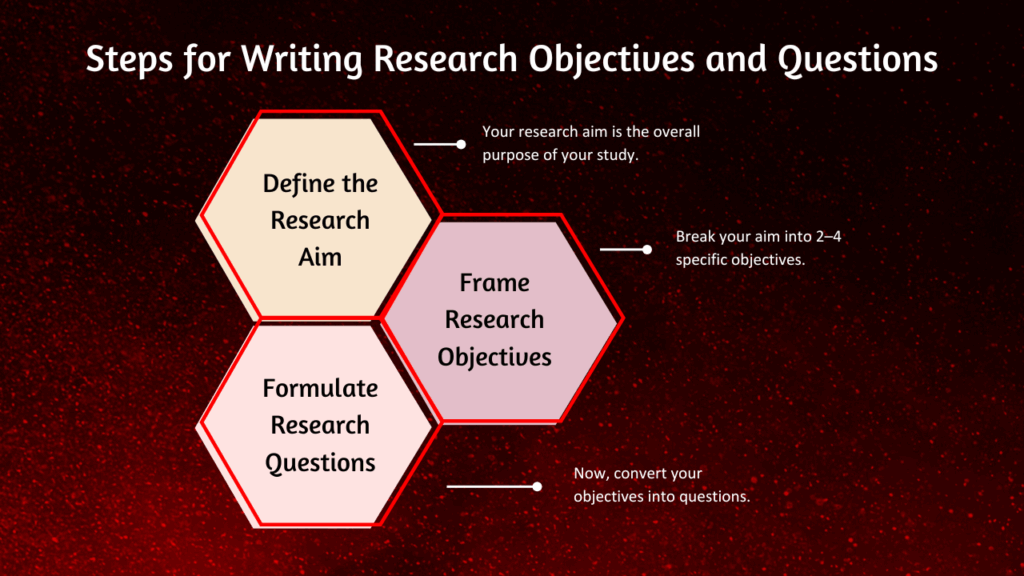05Aug

Framing research objectives and questions is the most crucial step in setting a strong foundation for any academic project, whether it’s a thesis, dissertation, or scholarly article. Without clearly defined objectives and well-crafted questions, your research can quickly become unfocused and ineffective. These two elements determine your study’s direction, methodology, and overall success.
In this guide, we will explore the importance of framing research objectives and questions, how they differ, and how you can align them strategically to build a compelling research framework. Whether you’re a postgraduate student or a PhD scholar, mastering this process will give your research clarity, purpose, and structure right from the beginning.
Before writing anything, it’s important to know the difference between research objectives and questions.
Whether you’re into qualitative research, quantitative research, or a mixed-methods approach, both objectives and questions must reflect your research aim clearly.

Your research aim is the overall purpose of your study. It gives direction to both your research objectives and research questions in the thesis.
Break your aim into 2–4 specific objectives. Use action verbs like analyze, evaluate, explore, develop, etc. These research objectives examples might help:
Now, convert your objectives into questions. Here are some examples:
This step-by-step guide to framing research questions ensures your entire research stays focused.
Here are a few solid examples of good research objectives for a thesis:
Make sure each objective contributes directly to your main research question.
A common issue among students is writing objectives and questions that don’t sync. Here’s how to align research objectives with research questions:
Avoid these pitfalls:
Understanding these common mistakes when framing research objectives will save time during your thesis development and ensure your research remains strong.
Use the SMART rule:
Knowing how to formulate SMART research objectives helps create a roadmap for your research planning.

If you’re working on a thesis or dissertation, strong research questions and objectives shape your chapters and justify your chosen research design. From problem statement to conclusion, everything connects back to your core objectives.
Good objectives and questions:
Whether you’re new to higher education or pursuing a PhD, mastering this skill is crucial.
Now that you know how to frame research objectives and questions, you’re ready to start your research on the right foot. Define your aim, break it into clear objectives, and formulate focused questions. Avoid common mistakes and follow the SMART format to stay on track.
Remember, great research begins with great planning—and that starts with framing the right objectives and questions.
Allahabad University (AU) has announced that it will start offering PhD programs in three foreign languages – French, Russian, and... read more
Want to pursue your PhD abroad? 5 scholarships you must know about Pursuing a Ph.D. abroad can be a rewarding experience,... read more

PhD scholars in Tamil Nadu have long struggled with delays throughout their academic journey, including challenges with course work approvals,... read more
Unrest peaks in Wardha univ, students move HC Wardha University:Wardha University, formally known as the Mahatma Gandhi Antarrashtriya Hindi Vishwavidyalaya (MGAHV),... read more
State Eligibility Test (SET) The State Eligibility Test (SET) is a common eligibility test conducted in India to determine the eligibility... read more
Gauhati University has decided to meet the students' demands by reversing the PhD course fee hike and providing refunds for... read more

Choosing a PhD topic is not just about finding something you like. It’s about identifying a topic that is both... read more

As a PhD scholar, one of the most challenging moments in the academic journey when your PhD manuscript rejected.... read more
Masters thesis writing is presented for all master’s degree in their own research topic. This blog is here to figure... read more
WhatsApp us
Leave a Reply